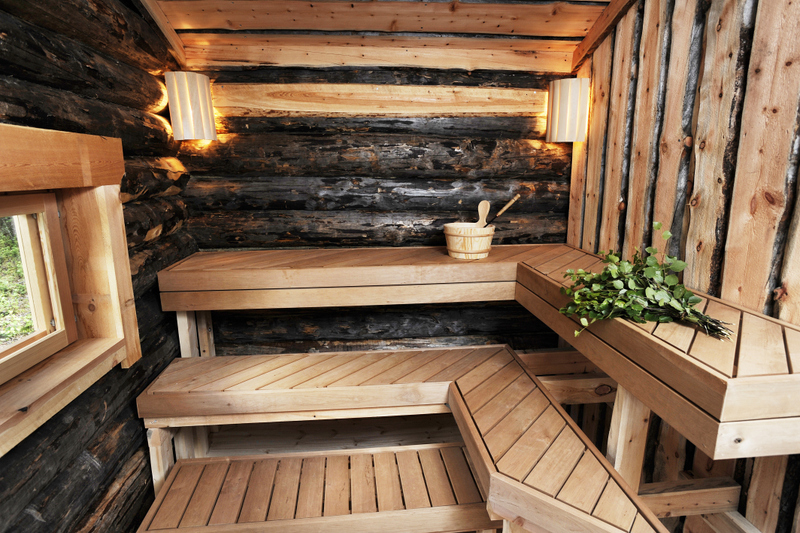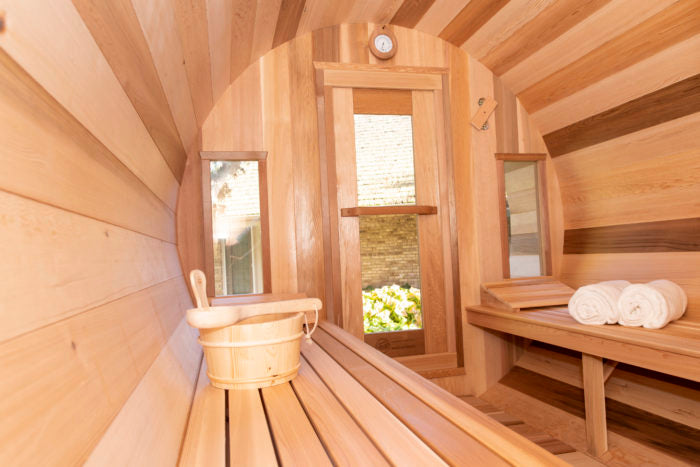Top Guidelines Of Traditional Sauna
Top Guidelines Of Traditional Sauna
Blog Article
The Of Traditional Sauna
Table of ContentsTraditional Sauna for BeginnersThe Only Guide for Traditional SaunaSome Known Details About Traditional Sauna Traditional Sauna - QuestionsThe 8-Minute Rule for Traditional Sauna
Many of the weight shed in a sauna is water loss and is re-gained upon rehydrating. Without a question sauna can be a vital part of a healthy and balanced weight loss program. To check out the differences between standard and IR saunas, I will certainly divide these right into proven, theoretical, and fabricated distinctions.Thus, the best point in the saunawhich is at the ceiling straight over the sauna heateris typically in between 185 and 190 F. Claims that a traditional sauna surpasses 200 F is merely not real and not applicable for electric saunas marketed in the United States. The temperature for a far-infrared sauna is generally established in between 120 and 140 F; however, unlike the typical sauna, the objective in and IR room is not to achieve a heat.
Due to the fact that of this, the temperature level distinction is virtually unnecessary, since excessive sweating results in both sauna types, however the technique of warming the body is various. In an IR sauna the bather will certainly really feel warm and will sweat profusely, but at a lot lower temperatures (Traditional Sauna). Therefore, if the goal is to invest longer time periods in the sauna, the IR sauna is an excellent option
When a conventional sauna has actually been effectively warmed, the sauna walls are warm, the air temperature has actually achieved set temperature and the rocks are very heated. As an intriguing side note, the heated wall surfaces and the rocks are sending out far-infrared warmth, combined with the warmed air, to develop an "enveloping heat".
Traditional Sauna - Truths

When the high temperature is attained, the elements cycle on and off to keep the high temperature level. A lot of conventional sauna individuals delight in putting water over the rocks to create steam to elevate sauna moisture degrees. The advantages of putting water over the rocks include: making the area a lot more comfortable, moistening the nasal passages, and enabling the usage of aromatherapy by mixing crucial oils with the water.

When the energy goes into the body, it creates the body temperature level to boost and eventually leads to sweating. In an infrared sauna it is very important for the emitters/heaters to continue to be on virtually regularly. Since there is no mass of rocks to retain heat, the sauna will certainly cool if the emitters shut off.
As discussed above, the sauna bather in an infrared room wants to place himself in front of operating emitters to obtain optimal advantage from the warm. The home heating time for both areas can be extremely various, relying on just how the spaces are utilized. For a conventional sauna, a bather should permit 30-40 mins for the room to achieve a desired temperature level and to correctly pre-heat the rocks.
Traditional Sauna for Dummies
A well created sauna will typically achieve a temperature of 150-160 F in concerning 30-40 minutes. For hotter temperature levels, the room might need to heat for a longer period.

Conventional saunas tend to be bigger (thus use even more electrical energy) than infrared saunas, although typical saunas are definitely offered in one and 2 individual dimensions too. For a two-person traditional sauna, 5x6 hop over to here or 5x7 dimension is most prominent. The top bench can comfortably seat 2 or three people and is also enough time to relax throughout the sauna session.
Some Known Incorrect Statements About Traditional Sauna
The typical expense per kWH of power in the united state is about $0.11, so a 4.5 kW heating system will certainly set you back about $.50 to compete one hour, if the heating system runs continually for one hour. Commonly a sauna heating system will certainly compete 75% of the very first hour and 50% of succeeding hours on given that the elements cycle once the established temperature level is accomplished.

There is a rarely gone over difference in the social experience between the two rooms. While our culture has actually shed some of the social benefit of the traditional sauna experience, it can be very socially gratifying (Traditional Sauna). From household time in the sauna, to heart-felt conversations with better halves, to sauna partiesthe traditional sauna experience can lead to intimate mingling
The 8-Second Trick For Traditional Sauna
Many higher end infrared areas include colored light treatment, noise systems and full-glass fronts.
Report this page